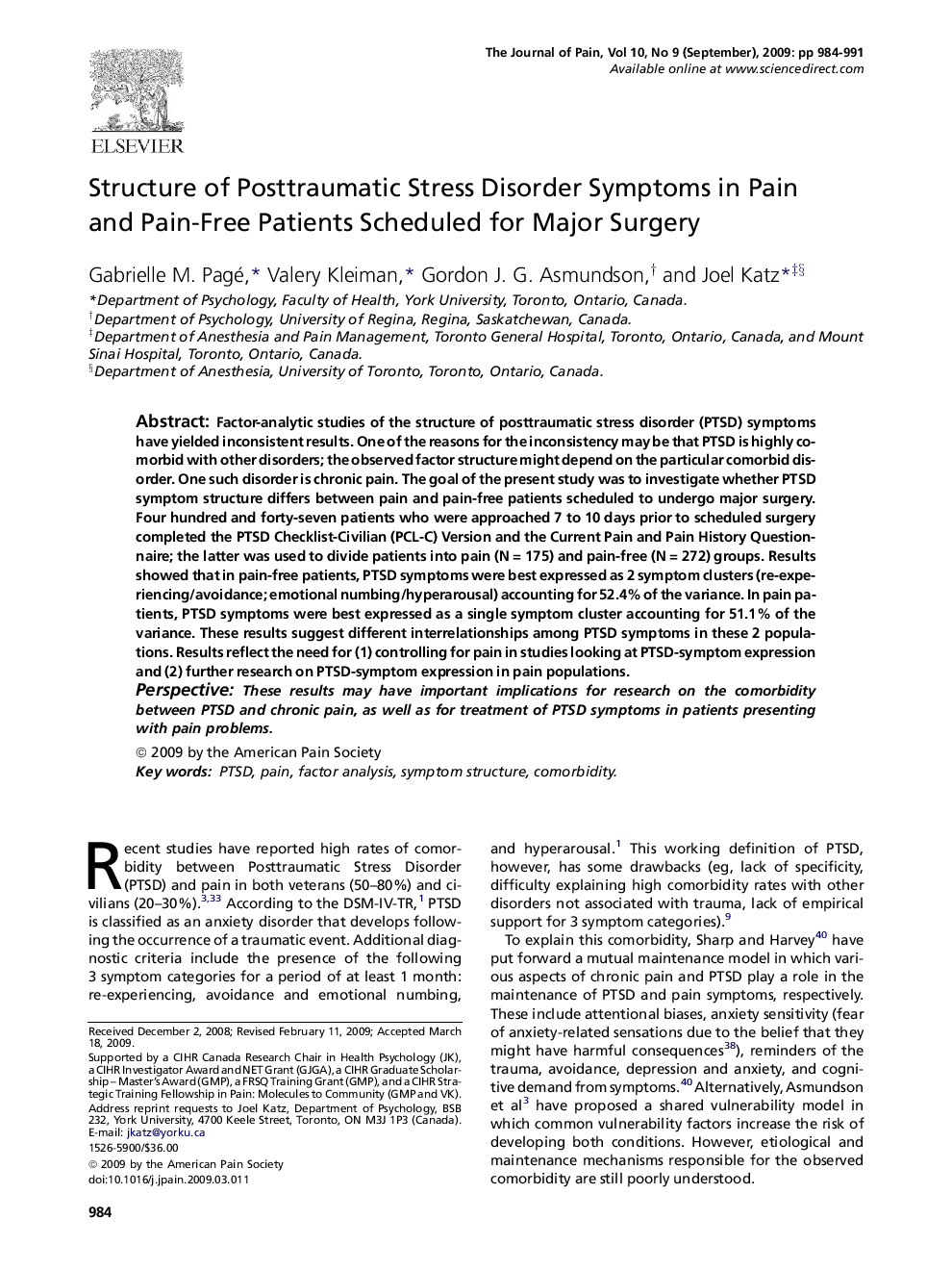| Article ID | Journal | Published Year | Pages | File Type |
|---|---|---|---|---|
| 2723409 | The Journal of Pain | 2009 | 8 Pages |
Factor-analytic studies of the structure of posttraumatic stress disorder (PTSD) symptoms have yielded inconsistent results. One of the reasons for the inconsistency may be that PTSD is highly comorbid with other disorders; the observed factor structure might depend on the particular comorbid disorder. One such disorder is chronic pain. The goal of the present study was to investigate whether PTSD symptom structure differs between pain and pain-free patients scheduled to undergo major surgery. Four hundred and forty-seven patients who were approached 7 to 10 days prior to scheduled surgery completed the PTSD Checklist-Civilian (PCL-C) Version and the Current Pain and Pain History Questionnaire; the latter was used to divide patients into pain (N = 175) and pain-free (N = 272) groups. Results showed that in pain-free patients, PTSD symptoms were best expressed as 2 symptom clusters (re-experiencing/avoidance; emotional numbing/hyperarousal) accounting for 52.4% of the variance. In pain patients, PTSD symptoms were best expressed as a single symptom cluster accounting for 51.1% of the variance. These results suggest different interrelationships among PTSD symptoms in these 2 populations. Results reflect the need for (1) controlling for pain in studies looking at PTSD-symptom expression and (2) further research on PTSD-symptom expression in pain populations.PerspectiveThese results may have important implications for research on the comorbidity between PTSD and chronic pain, as well as for treatment of PTSD symptoms in patients presenting with pain problems.
